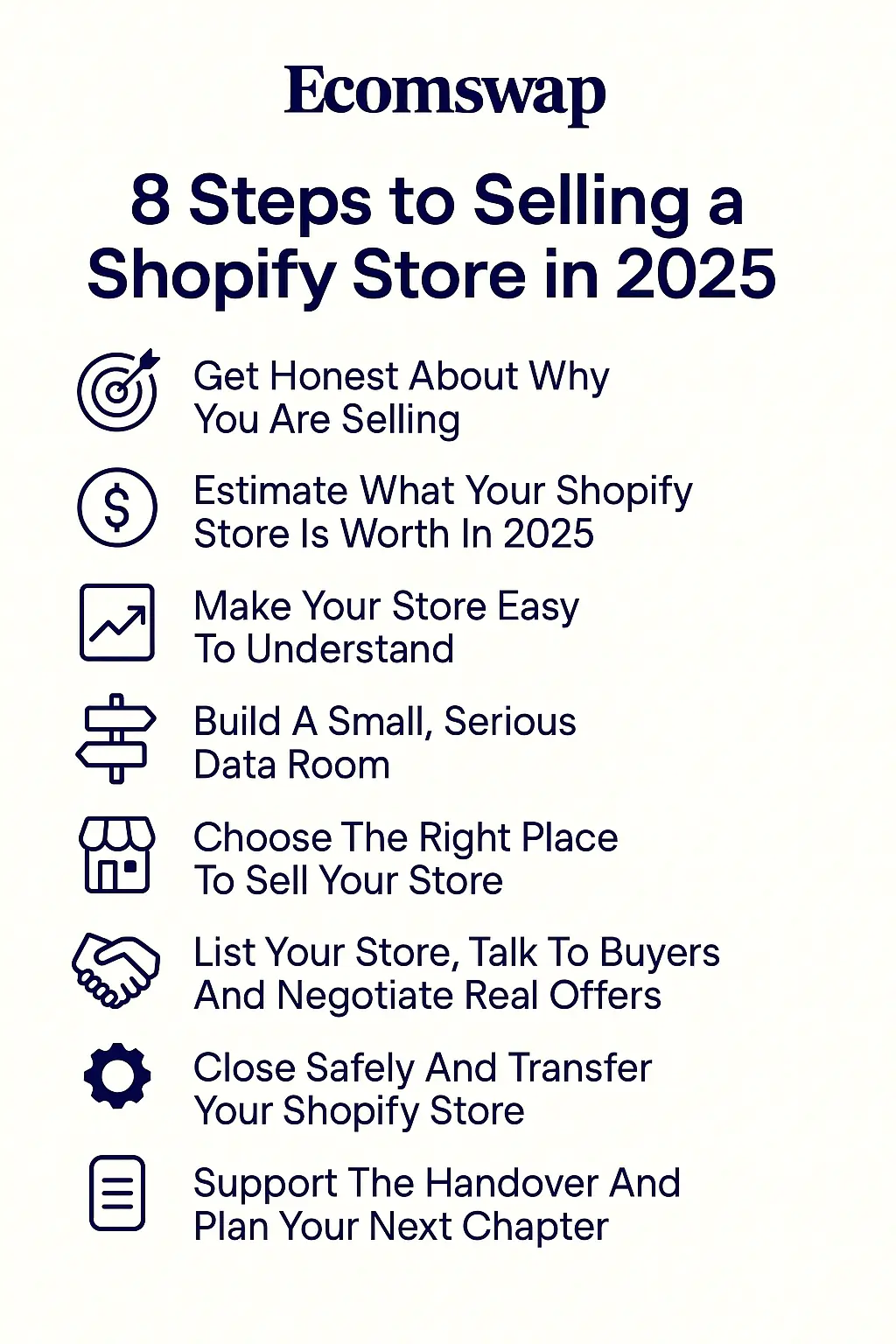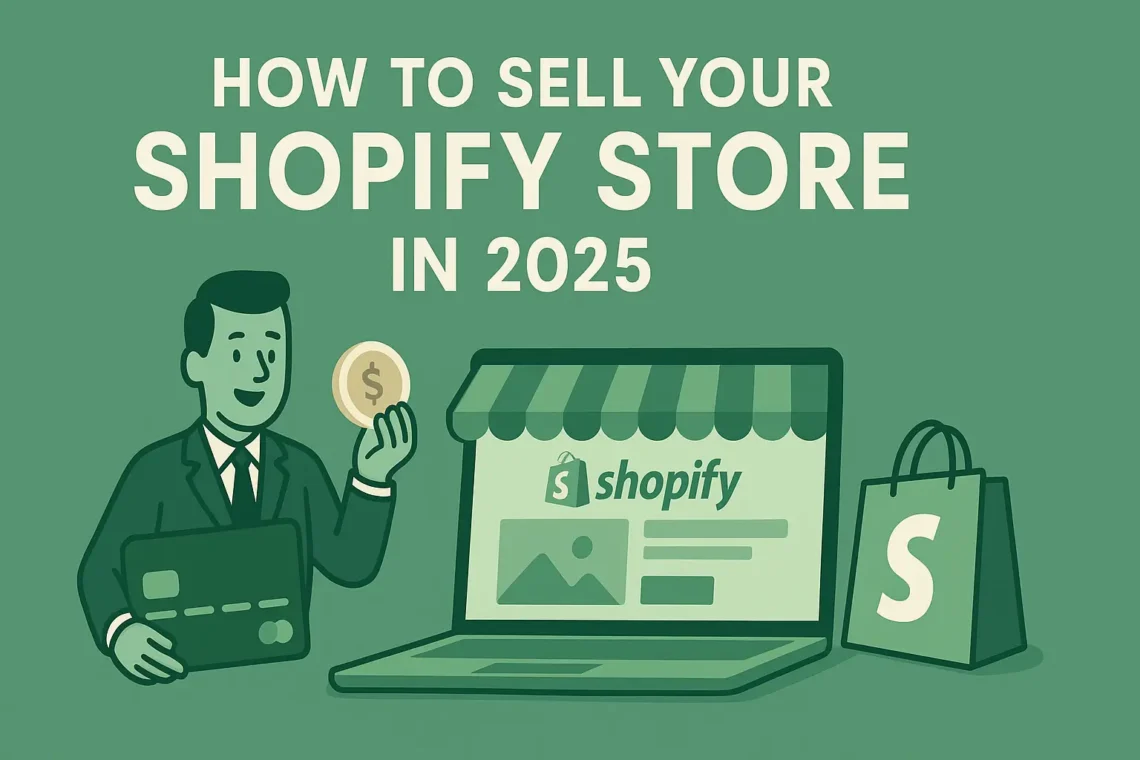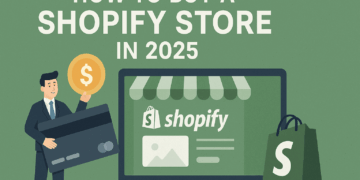You have already done the hard part. You picked a niche, survived rising ad costs, handled support tickets at odd hours, and turned a Shopify store into a real asset.
Now if you are wondering, “is it time to turn that store into a payout and move on to your next chapter?”. Keep reading!
Selling a Shopify store in 2025 is less about luck and more about process. If you understand how buyers think, present your numbers clearly, and follow a clean transfer flow, you can exit without drama and with money you feel good about.
This guide walks you through that, step by step, with Ecomswap in the background as a practical option, without pretending it is the only one that exists.
What does it Actually Mean to ‘Sell a Shopify Store’?

Selling a Shopify store is not just about handing over a login. You are selling the underlying business that happens to run on Shopify.
In a typical sale you transfer;
- The brand, domain and storefront.
- The product catalog and creative assets.
- Customer data and marketing systems.
- Supplier relationships and key operating knowledge.
Inside Shopify, the technical piece is straightforward. Shopify’s own documentation shows that ownership is transferred by changing the store owner in the Admin; you go to Settings → Users and Permissions, assign a New Store Owner, and Confirm.
From a buyer’s perspective, that change only works if everything around it is also handed over properly, for example – domains, apps, billing, analytics, and the playbook that keeps orders flowing.
Get the best price for your business — we take care of the rest.
Start Selling for FreeSell Your Shopify Store in 8 Simple Steps

Here is the journey in plain language.
First, you get clear on why you are selling and what a fair outcome looks like. Then you estimate what the store is worth, tidy your numbers and operations so a stranger can understand them, and put that into a small data room.
After that, you pick the right place to list your business for selling, speak with serious buyers, agree on a real offer, and close the deal through contracts and escrow.
Finally, you transfer the store, support the handover for a short period, and decide what you want this exit to fund next.
The rest of this guide unpacks each of these steps in more detail.
Receive an instant valuation with our Ecommerce Business Valuation Tool.
Get My ValuationStep 1 – Get Honest About Why You are Selling
Before you think about valuation or marketplaces, pause and answer one question in a very honest way ~ why do you want to sell this store now?
For most founders it is a mix of a few things, for example;
- You feel burnt out and want your time back
- You want capital for a new project or a life goal
- The store has outgrown your current skill set
- The risk feels too high in one traffic source, product or supplier
Once you are clear on the reasons, turn them into a simple, practical brief. Write down;
- The minimum amount you would feel good walking away with after fees and tax
- How quickly you genuinely need the sale to happen
- How long you are willing to stay involved after the handover
Here, Ecomswap as your brokerage partner will ask these questions early because your answers decide whether you should run a wide, competitive process or aim for a cleaner, faster deal. When you do this work upfront, every later step in the sale feels more intentional instead of reactive.
Our AI recommends the best listings based on your investment profile.
Discover MilesStep 2 – Estimate What Your Shopify Store is Worth in 2025
Serious buyers usually value a store using a simple formula:
Annual net profit (or SDE) multiplied by a valuation multiple
High authority guides on ecommerce sales show that many smaller online businesses sell in the range of roughly 2 to 4.5 times annual net profit, with stronger, more resilient brands sometimes achieving higher multiples.
The multiple moves up when;
- Revenue is stable or growing, not falling.
- Margins are healthy and refunds are under control.
- A reasonable share of sales comes from repeat customers and organic channels
- No single SKU, ad account or supplier dominates the business.
- Operations are documented and not dependent on you alone
It moves down when things are fragile, undocumented or clearly trending the wrong way.
At this point, you do not need a precise number. You need a realistic range you are willing to accept.
If you are unsure what your store might be worth, you can use Ecomswap’s valuation calculator to get a quick estimate based on your profit, niche and a few simple details. It will not replace a full review, but it gives you a clear starting point before you talk to buyers or decide if now is the right time to sell.
Step 3 – Make Your Store Easy to Understand With Data
Buyers do not run from problems as much as they run from confusion. The cleaner your story is, the easier it is for someone to pay a fair multiple.
Start with your numbers. Prepare a simple profit and loss statement for at least the last twelve months. Separate personal expenses from business costs, group ad spend by channel, and reconcile a few months of Shopify payouts to what actually arrived in your bank account.
Then look at your data. Make sure GA4 is installed correctly and tracking conversions. Be ready to show how traffic breaks down by paid, organic, email, social and repeat, and how those groups convert.
In essence, your data room must include;
- Monthly P&L for the last twelve months
- Shopify revenue and payout reports for the same period
- GA4 exports or screenshots of channel performance and conversion
- Summary of refunds, chargebacks and major support issues
- A short document covering suppliers, apps and key processes
Larger marketplaces and advisory firms explicitly recommend this kind of structured pack once a buyer has signed a basic NDA, because it speeds up diligence and avoids confusion later.
On Ecomswap, you can keep these files ready in the background, while your public listing only shows high level metrics. Interested buyers can then request deeper information through the platform rather than through scattered email chains.
The goal is to let a serious buyer verify your story without having to chase you.
Step 4 – Choose the Right Place to Sell Your Store
You now have three broad routes, each with a different balance of reach, support and effort.
One route is to use a curated brokerage that focuses on digital and ecommerce businesses. Ecomswap sits in this category.
It positions itself as a next generation M&A platform for online brands, combining a marketplace with valuation help, buyer vetting and built-in closing support.
The next one is to work with a more traditional advisor or broker. These firms tend to focus on larger or more complex deals. They help you prepare a full prospectus, run a structured process, and negotiate terms on your behalf, in return for a success fee.
A third path is more do-it-yourself – general online business marketplaces and private introductions in founder or operator communities. This can give you a wide pool of buyers but places more of the filtering, negotiation and process management on your shoulders.
Your choice should reflect your store’s size, how comfortable you feel running a sale process, and whether you value speed, maximum price, or simplicity most.
Step 5 – List Your Store, Talk to Buyers and Negotiate Real Offers
Once you pick a channel, you will create a listing or profile. On Ecomswap and similar platforms, this usually includes a short story of the business, your reason for selling, core metrics such as revenue and profit, and either a specific asking price or a range.
As interest comes in, remember that you are also interviewing buyers. In early conversations, focus on whether they;
- Have funds or realistic access to financing
- Understand the basics of ecommerce and your niche
- Are aligned with you on timeline and their expectations of your involvement
When someone is serious, the discussion moves toward a Letter of Intent. Templates used across the industry usually set out the price, what is included in the deal, how payment will be structured, the target closing date and any key conditions.
It is worth paying attention not only to the headline number but also to structure. A slightly lower price with more cash at closing can be better than a higher figure that depends heavily on an earn out tied to future performance you no longer control.
Step 6 – Close Safely and Transfer Your Shopify Store
Once you agree on terms, the work shifts to contracts, escrow and transfer.
Most modern platforms, including Ecomswap, work with third party escrow and legal frameworks so that money is held securely while assets move, and both sides know which conditions must be met before funds are released.
On the Shopify side, the core steps follow a pattern you will see in Shopify’s own documentation and in independent guides;
- Change the store owner in the Shopify admin to the buyer’s account
- Transfer domains, either inside Shopify if they are managed there, or at the external registrar if not
- Update billing details so your cards are removed and new ones added
- Hand over key integrations and rotate API keys, staff accounts and logins
Treat this as a checklist, not a loose conversation. Agree the list in writing, work through it line by line, and only approve the release of escrow once you and the buyer confirm that every item is complete.
Step 7 – Support the Handover and Plan Your Next Chapter
Most deals include some level of transition support. That might be a handful of calls over a few weeks, access over chat for a defined period, or a mix of both.
The key is to define it clearly – how long you will be available, what types of questions you will answer, and what falls outside the agreement. That protects you and gives the buyer confidence that they will not be left alone on day one.
After that, your attention should shift to two things.
First, speak with a tax professional in your country about how the sale will be treated and how to structure any future moves. Guides from advisors and brokers regularly stress that deal structure and tax can materially change what you actually keep.
Second, decide what this exit is funding. Sometimes it is a break. Sometimes it is another store with a tighter thesis. Sometimes it is something outside ecommerce entirely. Whatever it is, you now have the capital and the experience to approach it with more intention than when you started this store.
How Ecomswap Helps You Sell Your Shopify Store, Start to Finish
If you have never sold a business before, the whole thing can feel overwhelming. Ecomswap is built to take most of that weight off your shoulders. Instead of figuring everything out alone, you get help packaging your numbers, building a clean listing, and putting it in front of people who are actively looking to buy Shopify businesses.
The platform gives you a structured way to share information safely, answer buyer questions, and move from “interested” to “offer on the table” without chasing messages across random channels.
Once you accept an offer, Ecomswap helps you handle the unglamorous but critical parts: the paperwork, the escrow flow, and the actual transfer of your Shopify store and related assets. You are not left guessing when to change ownership, when money is released, or what needs to be handed over in which order.
Ecomswap lets you focus on telling the story of your store, while it handles the heavy lifting of turning that story into a clear, straightforward exit.
How to Sell Your Shopify Store FAQs
1. How do I sell a Shopify store as a beginner?
Start with the basics. Get your numbers in order, write a simple story of the business, then choose a place to list.
2. How much can I sell a Shopify store for?
Most smaller Shopify stores sell for a multiple of annual net profit, often somewhere in the low single digits. Stronger brands with clean books and repeat customers can sell for more. Ecomswap’s valuation calculator can give you a quick starting estimate, then you refine that once your detailed financials are reviewed.
3. How do I value a Shopify store?
Take your last 12 months of net profit or SDE, then apply a realistic multiple based on growth, margins, traffic mix and how dependent the store is on you. Stores that are growing, documented and more diversified usually get a higher multiple. If you list with Ecomswap, their team will stress test your valuation against real deals so you do not go to market at a number that makes no sense.
4. How can I sell a Shopify store for free or with low fees?
You can try a private sale through your own network or founder communities, which avoids platform fees but puts all the work and risk on you. Brokers and advisors charge a fee, but in exchange they bring buyers, process and safeguards. A platform like Ecomswap tries to sit in the middle of that tradeoff by keeping fees transparent while still giving you valuation help, vetted buyers and escrow support.
5. Is the Shopify Exchange marketplace still available?
No. Shopify shut down its Exchange marketplace, so you cannot list or buy stores there anymore.




